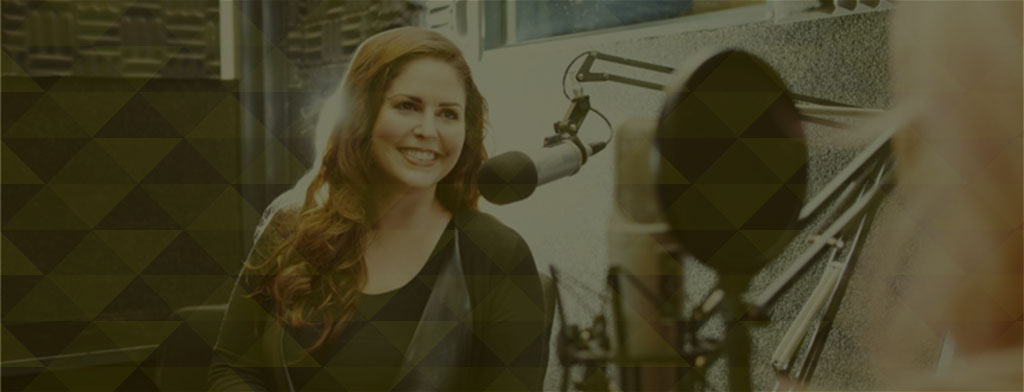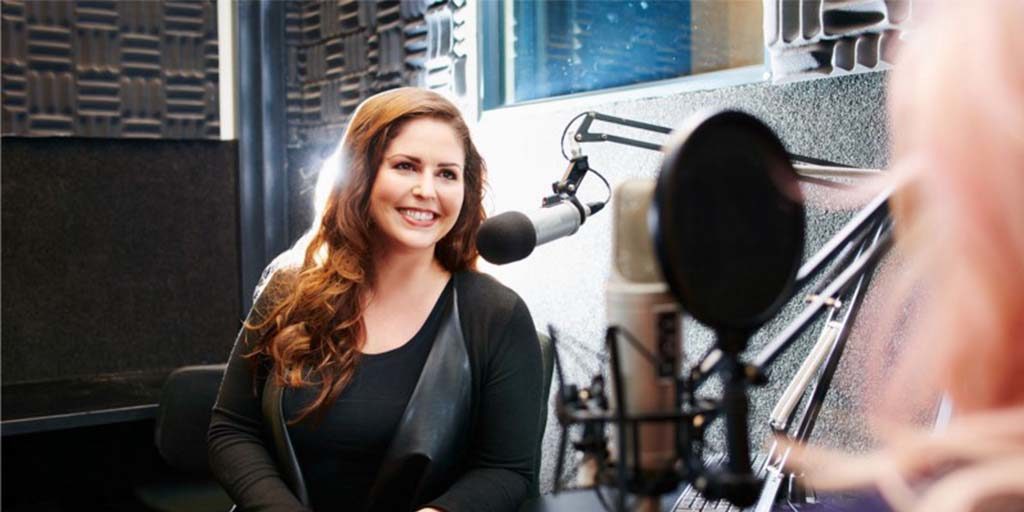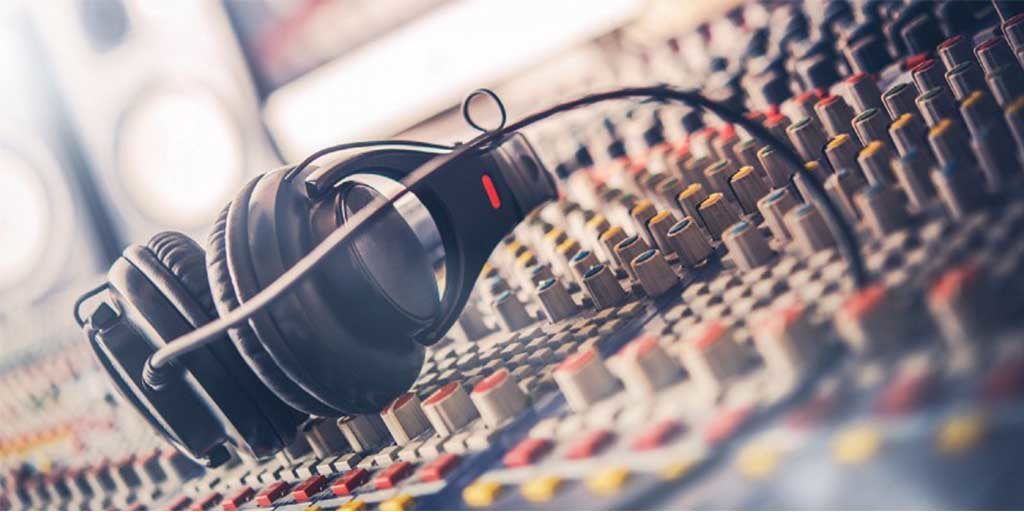Irish Language Radio Station
Interview with Róisín Healy, Content Marketing Manager at Version 1 and Technology Correspondent at Raidió na Life.
Priscillia Charles, Communications Director, VTQ
Róisín, you’re doing it all balancing two careers: not only working as the Content Marketing Manager at Version 1 but also as the Technology Correspondent at Raidió na Life. How do you do it?
Well, my role as Content Marketing Manager at Version 1 is my full-time role, and I take part in radio presenting on a voluntary basis. It can sometimes be challenging, depending on the topics that I’m covering on the radio. If the topic is something that came to me organically, such as news that I read, or a technology development that I am interested in — it’s very easy to prepare — I just show up and speak! But, if I am asked to provide commentary on a particular product or ongoing debate, I am conscious of conducting proper in-depth research before I go on air — which can be time-consuming in my spare time. It is very rewarding though when you receive good feedback or positive listener tweets after putting in a lot of effort researching!
Tell us about your background, what did you study and what attracts you to a career in content and digital media?
I studied Communications through Irish (BA sa Chumarsáid) at the National University of Ireland, Galway. I had always dreamt of becoming a journalist, but my first work placement at a national newspaper combined Journalism and Digital Marketing — which ended up covering everything from election reporting to developing a new website! After that year, I felt very strongly that Digital Marketing was going to be the way to go for me and I was lucky to have a good start at an e-Commerce company that set me on the path I am on. I didn’t set out to specialize in content marketing, I think my background in journalism, combined with my interest in all things digital made for the perfect combination without me realizing it!
So, you’ve always had an affinity for digital media and communication, what are some of the latest trends that have caught your eye?
I think something that has really interested me lately is the rise of ‘Stories’ on Snapchat, Instagram and Facebook. Now other platforms such as YouTube are also following the trend. The rise of ‘Vloggers’ had already fascinated me in recent years, but I feel that the temporary and fleeting nature of stories holds so much potential for brands, and it’s an area that hasn’t yet been fully exploited. That ‘FOMO’ effect or ‘fear of missing out’ has to be such a lucrative area for advertisers. I’m extremely interested in seeing where this is going. I watched a ‘documentary in 60 seconds’ this week, and I was so shocked at how much information and emotion I was able to absorb in 60 seconds. If you had told me that this was possible when I was in college digitizing tapes to load my documentary footage onto the computer, it wouldn’t have taken me long to hop on the bandwagon!
How did you get involved in radio?
I feel old saying this, but I can’t entirely remember how I started out with Raidió na Life as I have had so many different connections to the station! In the Irish speaking community, as I’m sure is the case with any minority language, it’s like you are involved with every outlet in the community whether you think it or not! I participated in many sections of the show from university onwards, and when I moved to Dublin in 2012, I took over a drivetime entertainment show. This show mainly focused on films, music and pop culture. It was when my good friend became the station’s production manager that I joined a panel for the breakfast show — this took a while to get used to! It can be challenging sometimes to jump into ‘on air’ mode at 8am, but once you get into the habit, it is the best start to your day!
Why choosing an Irish-language radio station over an English-language one?
It wasn’t a choice per se. I have friends, alumni and colleagues all over the Irish media, so it was through them that I always started on a new show or at a new station. I never actively sought out the radio as my focus was mainly on marketing, but as friends and radio connections moved around, I followed! If they are on RTÉ, Newstalk, or TodayFM at any given point, for example, it’s likely that I will partake on those stations as well. But my heart is fully in Raidió na Life, as community stations need volunteers to keep fulfilling their mission.
What type of audience do you have?
Raidió na Life has an audience of Irish-speakers of all levels — it is on the radio frequency 106.4 FM in Dublin, and via the website and app outside of
Dublin and abroad.
Tell us about your segment, why did you choose to cover technology over other topics?
I work in the technology industry, so it made sense for me to cover technology news when I was asked. The station had a technology and gadgets section in the past, but I was keen to avoid focusing on gadgets and reviews. My reasoning for this was that there are plenty of phone, computer, and gadget reviews online from people who are much more qualified than I. I felt that what we needed was to look at what was happening in the technology and startup industry around Dublin. Sometimes in Ireland, we aren’t good at reporting on our own successes and I like to share stories from Irish business wins, expansions, etc. One of my favorites was to cover the BT Young Scientist awards. You’d be amazed at the quality of technology as well as scientific concepts and prototypes from Irish students!
Raidió na Life is one of only four Irish language radio stations in the country that broadcast entirely in Irish. A recent study conducted by the University of Galway and the University of Limerick indicated that most of the other radio stations Irish broadcasts are very limited.
“The average weekly output in Irish is 3:30 hours (including repeats). For the most part, programs in Irish are broadcast outside peak hours (after 7 pm, overnight or early on Sunday morning). Of the commercial stations, by far the highest 8.” [Reference: Walsh, John, & Day, Rosemary. (2018). Discussion paper on Irish language radio broadcasting. Galway: NUI Galway and Mary Immaculate College, UL, DOI: 10.13025/S8VH1S]
What do you think those numbers reflect?
I think the numbers reflect the overall commitment to the Irish language in Ireland. Unfortunately, many people are not in a position to enjoy Irish language programming as they don’t speak or understand Irish — mainly through no fault of their own, but a combination of factors. For this reason, the minority – as in the Irish speakers — receive a minimum of programming. And I believe it’s mainly shows that that station would be publicly funded to broadcast. Commercial radio stations are a business — they earn revenue from advertisements and sponsorships placed throughout their shows — it is unlikely that advertisers would pay for a slot during an Irish show if mass listenership isn’t there for them. That’s why community radio stations are so important and need volunteers to keep returning and to host programming. The shows are not affected by commercial factors, and this is why you can hear such a diverse range of interests on community radio! I have listened to everything from the Catalan language, to literature, to heavy metal music, to Irish rap and most importantly I hear about grassroots initiatives on Raidió na Life. Diversity isn’t watered down by the commercial trends — and people from all walks of life and experience levels are given their shot to upskill and have their voice heard. “The lack of Irish-language programming during
primetime across most schedules is a cause of concern, as it represents the marginalization of the language to times when listenership is lowest.” [Reference: Walsh, John, & Day, Rosemary, (2018). Discussion paper on Irish language radio broadcasting. Galway: NUI Galway and Mary Immaculate College, UL, DOI: 10.13025/S8VH1S]
In your opinion, how do you see the future of the Irish-language?
It depends on the day that you ask me or the most recent news I hear. When you are involved in the Irish community, speaking Irish and attending an event such as the ‘Pop-up Gaeltacht’ that happens every month in a pub in Dublin, you would imagine it is only growing and becoming more popular. However, with some of the news from the Department of Education, and with students and teachers increasingly criticizing the need for Irish — it is very difficult to understand what direction it is going to take in the coming years. With the continuous demand for Gaelscoileanna, and conversation circles for adults becoming more available, I really hope that more children and adults in Ireland get the opportunity to enjoy the language – it is never too late!
Any new projects on the horizons that you would be working on and that you would like to share with our readers?
I am always, always trying to stretch myself over too many projects, so yes, there are a few new projects on the horizon! I have been taking courses in writing for children over the last year in Dublin, and I am hoping to focus on writing a children’s picture book in the next year. I have decided on the topic, and the main character, and I think it is very likely that it will be in Irish. It is totally different from what I am comfortable with — technology news and blog writing — and I’m still trying to decide if I will be ready for my new and very discerning target-audience!
This article first appeared in VTQ Magazine.
Read more: https://vtqglobal.com/



